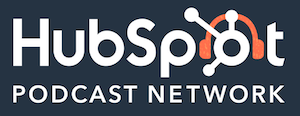How To Quickly Double Your Sales written by John Jantsch read more at Duct Tape Marketing
Marketing Podcast with Amanda Holmes
 In this episode of the Duct Tape Marketing Podcast, I interview Amanda Holmes. Amanda is the CEO of Chet Holmes International (CHI) which has worked with over 250,000 businesses worldwide. At age 24, she inherited her father’s multi-million dollar enterprise, which specializes in helping companies double their sales. She’s the author of a book — Based on The Ultimate Sales Machine: Turbocharge Your Business with Relentless Focus on 12 Key Strategies.
In this episode of the Duct Tape Marketing Podcast, I interview Amanda Holmes. Amanda is the CEO of Chet Holmes International (CHI) which has worked with over 250,000 businesses worldwide. At age 24, she inherited her father’s multi-million dollar enterprise, which specializes in helping companies double their sales. She’s the author of a book — Based on The Ultimate Sales Machine: Turbocharge Your Business with Relentless Focus on 12 Key Strategies.
Key Takeaway:
At just 24, Amanda Holmes inherited her father’s multi-million dollar enterprise – Chet Holmes International. Without much direction, she had to navigate the uncharted waters of running an enterprise at that scale. In this episode, Amanda shares more about her journey as CEO and the challenges of implementing change in a long-standing organization. Amanda dives into the process her father developed years ago that has helped large companies quickly double their sales and how she has helped that process evolve over the years.
Watch this Episode on YouTube
![]()
![]()
Questions I ask Amanda Holmes:
- [2:49] What was it like being thrust into an ongoing organization as a family member?
- [6:04] What was hard for you to change?
- [7:58] What’s been the most fun for you when it comes to stepping into the CEO role of Chet Holmes International?
- [9:26] Would you say that your music and arts background has brought a level of creativity that maybe didn’t exist in the org before?
- [11:50] Who is your typical client at CHI?
- [13:17] A core concept of your coaching is Dream 100 – can you describe what this is?
- [17:48] One of the challenges you alluded to – we’re so focused on digital right now, you particularly have yourselves firmly in what you’re calling old-school processes – would you say that the old-school processes are working better than ever?
- [19:59] Where can people find out more about you and your work?
More About Amanda Holmes:
- UltimateSalesMachine.com
- Get a copy of her book on Amazon — Based on The Ultimate Sales Machine: Turbocharge Your Business with Relentless Focus on 12 Key Strategies.
- Connect with Amanda on Instagram — @amanditaholmes
Like this show? Click on over and give us a review on iTunes, please!
John Jantsch (00:00): This episode of the Duct Tape Marketing Podcast is brought to you by Nudge, hosted by Phil Agnew. It’s brought to you by the HubSpot Podcast Network, the audio destination for business professionals. You can learn the science behind great marketing with bite size 20 minute episodes packed with practical advice from world-class marketers and behavioral scientists. And it’s not always about marketing. Great episode. Recently you learned the surprising truths about and tips for beating, stress and anxiety. Sounds like a great program, doesn’t it? Listen to Nudge wherever you get your podcasts.
(00:48): Hello and welcome to another episode of the Duct Tape Marketing Podcast. This is John Jantsch. My guest today is Amanda Holmes. She is the c e O of Chat Holmes International, which has worked with over 250,000 businesses worldwide. At age 24, she inherited her father’s multi-million dollar enterprise, which specializes in helping companies double their sales. A lot of their works based on the bestselling book, the Ultimate Sales Machine, of which they have a new edition coming out. Amanda’s name will be all over the new edition as well. And she has merged her father’s proven process with her own forward thinking ideas to connect the old school sales process with hybrid, online and offline instant gratification and short attention span that we see in consumers today. So Amanda, welcome back to the show.
Amanda Holmes (01:38): Thank you so much, John. You know what means so much to me that you interviewed my father and then you interviewed me so many years ago and here we are again. It just, it means a lot. I, not a lot of people interviewed my father either,
John Jantsch (01:51): So I I was gonna say, I might be one of the few podcasters who has interviewed you both
Amanda Holmes (01:58): I have never heard it from anybody else and I’ve done hundreds of interviews, so you are the only one
John Jantsch (02:03):
Amanda Holmes (02:15):
John Jantsch (02:16): So we also have another shared connection. My daughter has actually worked for me for about 12 years. Uh, she is our chief operating officer, so I really kind of have to go there. Didn’t work in the business as a family member. Right. You really brought, came into the business. I would have to think in some ways that was a pretty tall order. Becau, in fact, I think you were studying music in college and you know, not necessarily preparing for a career as a C. Right. So what’s it, I guess I was gonna ask you what’s like working with family, but that’s not really, it wasn’t really your experience. So what was it like really? And I know you’ve told this story many times, what was it like basically being thrust into an ongoing organization, but as a family member?
Amanda Holmes (03:01): Yes, it, well, it was hard because me and my father were very close. I was actually born on his birthday. We shared the same birthday February 13th, and it was as if just the stars aligned. And so losing him was like losing air. It was like I didn’t know where up was or down was. I couldn’t eat, I couldn’t sleep. So getting all of that while at the same time, like I can remember just days after his funeral. And the only reason why I remember that cuz all that time is such a blur, but I just remember all of these flowers around my room from his funeral and I was sitting there and they had just sent me the p and l of all the companies and it was the first time I’d ever seen it. And it just felt like this p and l was never ending.
(03:45): I kept scrolling and scrolling and I just broke down. It was like, how, how is this possible that, so my father battled with cancer for a year and a half before he passed. And he spent 352 nights in the hospital and never once did he spend it alone. So it was me, my mom, and my brother. We just, we rotated spending all nighters with him. So I spent easily a hundred all nighters with my father in the hospital. Never once did he say, Hey Amanda, let me explain to you what my businesses are
(04:42): So I do talk on that every once in a while. But, so it was utterly shocking and it really is. I look back and I think it’s a miracle that we’re here today
John Jantsch (05:58): What was hard for you? I mean you, you, you obviously made some changes, you know, what was hard for you to change? I mean, not necessarily resistance, but just really hard for you to even wrap your head around
Amanda Holmes (06:10): Changing. So we had never processed an an order online. My father was very strict around, you know, every sale should come from a salesperson to having a conversation either over the phone or in person. So I can remember the first time that I put some pricing online and I took a moment and it was like, I’m so sorry dad. I know you said this
(07:02): And making that distinction because at first it was anybody that my father respected, ultimately they would say, well your father said I was the best in the planet on this. And I’d go, okay. And I’d put them up on this pedestal of who was the best, right? Cause my father said he was the best, even though I started realizing that everyone said that my father said they were the best. So then I started reading through his emails to try and figure out what he really thought of them. That was the way that I would find out. And then the next level was okay, just because my father said he was the best, now I have to discern, is this somebody that I can work with? And there were quite a few of them that did not work with me very well. And that’s okay. It’s just a little bit of a different modus opera Ren, but still the strategies are the same. So it was interesting to see that culture shift.
John Jantsch (07:52): So shifting gears a little bit to maybe a more positive, less of a challenge, what’s been the most fun for you?
Amanda Holmes (07:59):
John Jantsch (09:04):
Amanda Holmes (09:06): But that’s been a blast. And just being really creative about ways to get attention and then converting those, that attention into sales and leads and sales. That’s a ton of fun for me.
John Jantsch (09:19): Would you say that you’re, uh, and I know this is gonna sound sort of stereotypical, but would you say that your music background, your arts background, has brought a level of creativity that maybe didn’t exist?
Amanda Holmes (09:31): Absolutely. So the new edition of the book The Forward, instead of saying Dear Reader, I instead said Dear dad. And that was a, and it something that Julian Eon, my book coach at the time, had suggested I do. And when I wrote it, everyone that read that majority of grown men that read it would cry reading it. And they thought they, out of all the every page, every sentence, I made sure that it was some way to double sales. But that letter to my dad, everyone said lead with that cuz that’s going to touch more people than just doubling sales techniques. And I put that into a video actually. And that’s been what I’ve been using to promote the book. So to me that video is a music video. I wrote the lyrics, even though I’m not singing them, they’re written. But everything that I had as a songwriter, I put into that video. To me, that’s the single that came out with this new edition of the book, which is kind of funny to think about. But man, it is hitting people in a completely different way than I never expected. And it was the most nerve-wracking thing on the planet to put that thing out. I really thought that. I didn’t think that people would like it, but everybody kept saying, I love it, I love it. You should put that out. And it’s been such a loving response. So yeah, that, that songwriter in me, I think.
John Jantsch (10:55): Are you an agency owner, consultant or coach that works with business owners? Then I want to talk to you about adding a new revenue stream to your business that will completely change how you work with clients. For the first time ever, you can license and use the Duct Tape Marketing system and methodology in your business through an upcoming three day virtual workshop. Give us three days and you’ll walk away with a complete system that changes how you think about your agency’s growth. The Duct Tape Marketing System is a turnkey set of processes for installing a marketing system that starts with strategy and moves to long-term retainer implementation engagements. We’ve developed a system by successfully working with thousands of businesses. Now you can bring it to your agency and benefit from all the tools, templates, systems and processes we’ve developed. To find out when our next workshop is being held, visit dtm.world/workshop. That’s DTM world slash workshop.
Amanda Holmes (12:02): Yes. Okay, I’ll answer that by asking you a question. And you probably know the answer to this. What percentage of businesses do you think make it to a million in annual sales?
John Jantsch (12:11): I don’t know the exact answer other than it’s relatively small. Not
Amanda Holmes (12:15): Really small. Yeah. If
John Jantsch (12:16): You had to guess, I’m gonna say 9%.
Amanda Holmes (12:19): Okay, let’s close, let’s close 5% of companies. Make it to a million of that 0.08%, make it to 5 million of that 1.5%, make it to 10 million so it gets a little bit better.
John Jantsch (13:12): One of the core concepts, I have actually not, not seen what you’ve done in the second edition yet, but in the, certainly in the first edition. Well, and, and I know it’s a core concept of your coaching, is this, uh, concept of the Dream 100. I wonder if you could kind of describe that. Cause I know that’s a big E for
Amanda Holmes (13:28): You. Yes, it’s the fastest, least expensive way to double sales. This one strategy has doubled the sales of more companies than any other. My father invented it working for billionaire, Charlie Munger, co-chairman of Berkshire Hathaway. So he doubled the sales of nine different companies for Charlie all within 12 to 15 months, and several of them multiple years consecutively. So he realized that he had a system for doubling sales and it went something like this. So he was given a list of 2200 potential prospects and they said, okay, go cold. Call these 2200. But when he did some research, he realized that only 167 of them purchased 95% of the space. So instead of going after 2200, he led an intensive dream 100 to just those 167. Now it being in their face and their place and their space. What can we do to provide the most value for them?
(14:20): For him, back then it was direct mail, cold calling and faxing. So twice a month he was doing direct mail. Four times a month he was cold calling and following up with a fax in an email every once in a while. And he did that for months. For the first four months he got nothing, which un talked around the office like what is this? Why is this expert in sales? And he hasn’t generated a thing. But in the sixth month he closed the largest contract that the industry had ever seen. And then subsequently after that doubled the doubled. Now. So by definition, there’s always a smaller number of better buyers than there are all buyers. That means that marketing and selling to them is cheaper than marketing and selling to all buyers. And I’ve even, as I look at this and what you’ll see in the new edition is so many people get, they see the Dream 100 and they go, oh my gosh, how do I do direct mail?
(15:09): How can I make this work with direct mail? And how do I get a hundred people on my list? You’re missing the point if you’re super focused on just those two things. Because we have so many marketing mediums in our use today. I show how I used a dream. One, I focused on one potential dream client and I followed up with them every single day using social media. Every time they post something on social, I’d comment with something of value. Every time they posted another thing I’d add another piece of value and another comment. And another I, for every single day, for three months, I commented on every single thing that this person said. And three months in they came back to me and said, Hey, I’d like to buy 650 books of the Ultimate Sales Machine. I’m still reaping the benefits of that three months of pigheaded discipline and determination.
(15:57): Today they bought another thousand books. It’s actually, it was the CEO of ClickFunnels, so Dave Woodward I did this with. So the point is, it’s about picking who’s one person that could completely change your world. And then can you multiply that even by, you could have four, you could have 10, I’m calling it the target 12. It doesn’t have to be a hundred, right? The whole point is just to get laser focused and follow up with pigheaded discipline and determination, whichever medium that may be. If you wanna use direct mail, that’s great because it will land cuz nobody’s doing direct mail, right? Yeah. But if you wanna do it on Instagram dms, that’s where I did it to get that client. Right. It could be on LinkedIn, it could be on V voice drops on cell phones
John Jantsch (16:41): Or all of them. Right? Or all of them. Or all of them, right?
Amanda Holmes (16:43):
John Jantsch (16:58): Yeah. And I think what’s so important about that lesson is you can now afford to spend money
Amanda Holmes (17:16): Absolutely. We had a client, so I went, I’ve created these bootcamps and a client went through the bootcamp, they went after four people that had already said no to their services. It was a hard, no, I’m definitely not interested. And then he led with an education to those four. After he gave the presentation of an education, he closed 8.4 million worth of sales in just six weeks. Six weeks. And the average sales rep would sell 8 million in an entire year. He did it in six weeks. Cuz he targeted his dream. He only needed four. Dream four to generate 8.4 million.
John Jantsch (17:54): So one of the challenges, I th I, you kind of alluded to this, we’re so focused on digital right now, you, you have yourselves firmly in what you’re calling old school
Amanda Holmes (18:12): Absolutely. I mean, take what I just did at trade shows. It’s shocking how many people at trade shows have no idea how to have a face-to-face conversation. I’d walk up to a booth and 90% of them had no idea how to start asking questions. You know, I’d ask, what do you do? And they have no idea. They look starstruck. Like what? You’re talking to me in real life. I don’t know what to do.
(19:00): So it’s blending of the two. My funnel online got me the sales, but me walking around with a four foot billboard on my back in a trade show got the attention in the press. And now I’ve taken vi video that I got from influencers in the space that were recording me cuz they thought it was hilarious. And I’m using that in my ads and I’m repurposing it, right? So there’s so many different ways that I think in person too. It was just at a mastermind with Grant Cardone two weeks ago, and there were 80 people in the room, all of which would’ve loved to talk to Grant Cardone. He walked out of the room and nobody followed him. And I’m looking around the room going, are you kidding me? That’s a billionaire. I’d love to talk to Grant Cardone. Why not? So I run out there and I start to have a dialogue with him. It’s like, it’s as if we only can communicate through a text or on right in an in a social media aspect. He was right there, live breathing. And I handed him the book and I said, you should watch Dear Dad, it’ll make you cry. I’ll send you a book. And he’s like, I will definitely cry from that. I’m sure I will. I love that. Thank you
John Jantsch (20:01): Amanda, thanks for dropping by the Duct Tape Marketing podcast. Tell people where they can find all the work that you’re doing and certainly get a copy of the new book or the rev revised updated, fully updated book.
Amanda Holmes (20:12): Yes. Ultimate sales machine.com is where everybody can pick up the book, but it’ll give you a bunch of extra bonuses that you wouldn’t get on Amazon. And then if you wanna online, I’m a lot of different places, but I spend more of my time on Instagram. My name Amanda Holmes was taken, so I’d use my salsa name Amanda Dita. So you can find me on Instagram at manita holmes.
John Jantsch (20:34): All right, awesome. Well, great having you back on the show again and uh, hopefully we’ll run into you again, one of these days out there on the road.
Amanda Holmes (20:42): Thank you John. It was such a
John Jantsch (20:43): Blessing. Hey, and one final thing before you go. You know how I talk about marketing strategy, strategy before tactics? Well, sometimes it can be hard to understand where you stand in that, what needs to be done with regard to creating a marketing strategy. So we created a free tool for you. It’s called the Marketing Strategy Assessment. You can find it @ marketingassessment.co check out our free marketing assessment and learn where you are with your strategy today. That’s just marketingassessment.co. I’d love to chat with you about the results that you get.
Sign up to receive email updates
Enter your name and email address below and I’ll send you periodic updates about the podcast.
This episode of the Duct Tape Marketing Podcast is brought to you by the HubSpot Podcast Network.
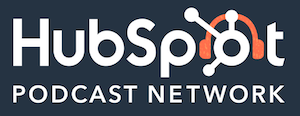
HubSpot Podcast Network is the audio destination for business professionals who seek the best education and inspiration on how to grow a business.
Did you miss our previous article…
https://www.sydneysocialmediaservices.com/?p=4401

 In this episode of the Duct Tape Marketing Podcast, I interview Marcel Petitpas. Marcel
In this episode of the Duct Tape Marketing Podcast, I interview Marcel Petitpas. Marcel 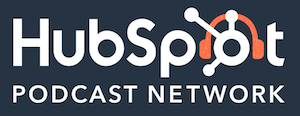
 In this episode of the Duct Tape Marketing Podcast, I interview Andrew Warden. Andrew is the
In this episode of the Duct Tape Marketing Podcast, I interview Andrew Warden. Andrew is the 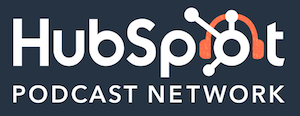
 In this episode of the Duct Tape Marketing Podcast, I’m doing a solo show, and I’m gonna talk about something that I’ve been talking a lot about lately called the Customer Success Track.
In this episode of the Duct Tape Marketing Podcast, I’m doing a solo show, and I’m gonna talk about something that I’ve been talking a lot about lately called the Customer Success Track.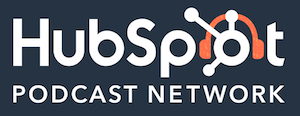 HubSpot Podcast Network is the audio destination for business professionals seeking the best education and inspiration to grow a business.
HubSpot Podcast Network is the audio destination for business professionals seeking the best education and inspiration to grow a business. In this episode of the Duct Tape Marketing Podcast, I interview Steve Miller.
In this episode of the Duct Tape Marketing Podcast, I interview Steve Miller. 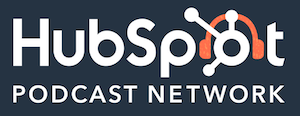
 In this episode of the Duct Tape Marketing Podcast, I interview Laura Nelson. Laura
In this episode of the Duct Tape Marketing Podcast, I interview Laura Nelson. Laura 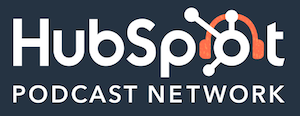
 In this episode of the Duct Tape Marketing Podcast, I interview Laura Bull. Laura is
In this episode of the Duct Tape Marketing Podcast, I interview Laura Bull. Laura is 
 In this episode of the Duct Tape Marketing Podcast, I interview Dan Franks. Dan is the Co-founder and president of Podcast Movement, the world’s largest conference and trade show for the podcast industry. He is a CPA and was formerly the Business Manager and Director of Live Events for Midroll Media.
In this episode of the Duct Tape Marketing Podcast, I interview Dan Franks. Dan is the Co-founder and president of Podcast Movement, the world’s largest conference and trade show for the podcast industry. He is a CPA and was formerly the Business Manager and Director of Live Events for Midroll Media.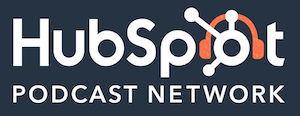
 In this episode of the Duct Tape Marketing Podcast, I interview Jeffrey Shaw. Jeffrey
In this episode of the Duct Tape Marketing Podcast, I interview Jeffrey Shaw. Jeffrey 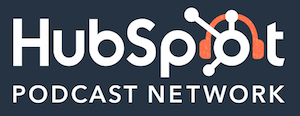
 In this Duct Tape Marketing Podcast episode, I interview Jacqueline Lieberman. Jacqueline is the f
In this Duct Tape Marketing Podcast episode, I interview Jacqueline Lieberman. Jacqueline is the f